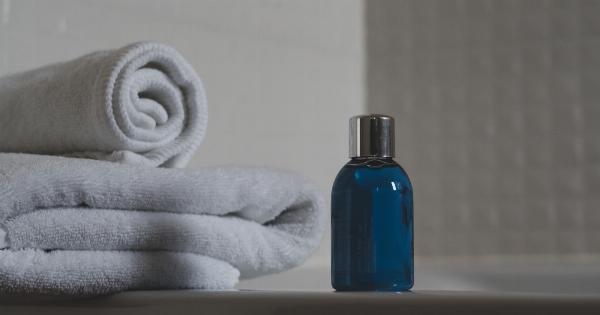Bathing is a daily activity for most people, but have you ever wondered how often you should be taking a bath? The ideal frequency for bathing can vary depending on various factors such as personal hygiene, skin type, lifestyle, and geographical location. In this article, we will explore the different factors that can influence the ideal bathing frequency and provide some tips to help you determine what works best for you.
Factors that influence bathing frequency
1. Personal hygiene:.
Personal hygiene is one of the primary reasons why we bathe. It helps to remove dirt, sweat, and bacteria from our bodies, leaving us feeling clean and refreshed. For most people, a daily bath or shower is sufficient to maintain good personal hygiene.
However, individuals with certain medical conditions or those who engage in activities that cause excessive sweating, such as sports or physical labor, may need to bathe more frequently.
2. Skin type:.
Our skin type plays a crucial role in determining how often we should bathe. People with dry skin are advised to take shorter baths with lukewarm water and use mild, moisturizing soaps or cleansers.
Frequent bathing for individuals with dry skin can strip away natural oils, leading to further dryness and irritation. On the other hand, individuals with oily or acne-prone skin may benefit from more frequent bathing to help remove excess oil and prevent breakouts.
3. Geographical location:.
The climate and environment of your geographical location can also impact the ideal bathing frequency. In hot and humid climates, where individuals tend to sweat more, a daily bath is often recommended.
In contrast, colder and drier climates may not necessitate a daily bath, as the skin is less prone to sweating and the risk of body odor may be lower. Moreover, individuals living in highly polluted areas may choose to bathe more frequently to cleanse their skin of pollutants.
4. Lifestyle and activities:.
Our lifestyle and daily activities can have a significant influence on how often we need to bathe.
People who have physically demanding jobs or engage in intense physical activities, such as athletes, may need to shower more frequently to remove sweat and prevent body odor. Additionally, individuals who swim frequently should rinse off with fresh water to remove chlorine or saltwater residue that can be harmful to the skin if left untreated.
5. Cultural and personal preferences:.
Bathing frequency can also be influenced by cultural norms and personal preferences. Some cultures value daily bathing as part of their traditions, while others may have different bathing rituals or consider bathing less frequently as acceptable.
Furthermore, personal preferences, such as the relaxation and comfort of bathing, can also play a role in determining how often one chooses to bathe.
Tips to find the ideal bathing frequency
1. Observe your body:.
Pay attention to how your body feels and smells throughout the day. If you feel sweaty or notice body odor, it may be a sign that you need to bathe more frequently.
Conversely, if you have dry skin or notice irritation after bathing, you may be bathing too often and should reduce the frequency.
2. Consult a dermatologist:.
If you’re unsure about the ideal bathing frequency for your skin type or have specific concerns, it’s best to consult a dermatologist.
They can assess your skin condition and recommend the most suitable bathing routine based on your individual needs.
3. Adjust based on seasonal changes:.
The ideal bathing frequency can change with the seasons.
For example, you may find that you need to bathe more often during the summer months when you tend to sweat more, while in winter, you may need to reduce the frequency to prevent excessive dryness.
4. Use gentle products:.
Choosing gentle soaps, cleansers, and shower gels can help maintain the natural balance of your skin. Harsh products can strip away essential oils and disrupt the skin’s moisture barrier, leading to dryness and irritation.
Opt for mild, moisturizing formulas that are suitable for your skin type.
5. Focus on targeted cleansing:.
Instead of taking a full-body bath or shower every day, consider focusing on targeted cleansing. You can wash areas prone to sweat and odor, such as the underarms, feet, and groin, while leaving the rest of your body for a full bath less frequently.
This approach helps maintain personal hygiene without over-drying the skin.
The verdict: What’s the ideal frequency for bathing?
Ultimately, the ideal frequency for bathing is a personal choice based on factors such as personal hygiene, skin type, lifestyle, and geographical location.
While a daily bath or shower is sufficient for most people to maintain good personal hygiene, individuals with specific needs or concerns may need to adjust their bathing frequency accordingly. It’s essential to listen to your body, observe any changes or discomfort, and consult with professionals if needed, to establish a bathing routine that works best for you.































